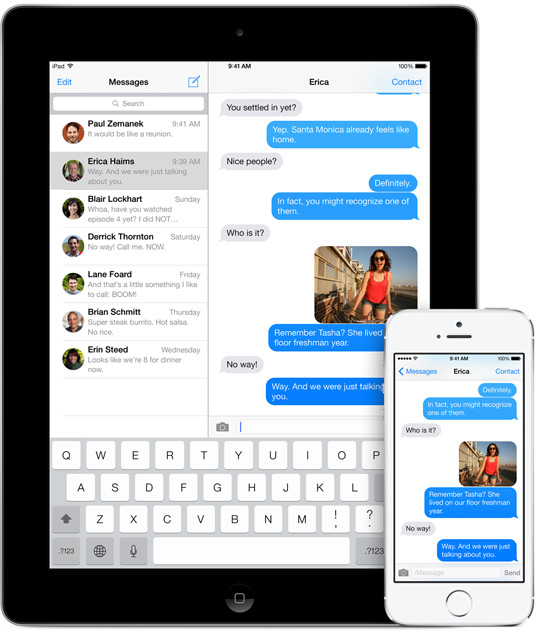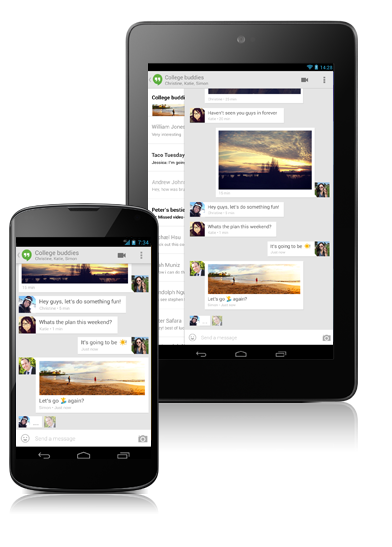Are you a frequent message sender? Do you use an app for sending messages through your smartphone? Yeah, I thought so. Chances are you’re acquainted with either Apple’s iMessage service or Google’s Hangouts messaging app or even (gasp!) both of them. Basically they are both capable of conveniently sending short text messages to friends and colleagues. There are some important differences however which could make you lean towards using one or the other.
Apple’s iMessage like most things Apple, only plays nice with fellow Apple devices and services and is not accessible on a PC. You’ll need an Apple device and account to use iMessage to send messages between your Mac, iPhone, iPad, etc. to other Apple users. Of course you can also launch video and voice chat through iMessage though you are really launching separate apps (FaceTime) for these features and they are not technically part of iMessage. For sending quick texts and not having to fully rely on SMS messaging, iMessage is a champion. Conveniently, iMessage can also default to SMS if local internet is not available.
Google’s Hangouts is steadily gaining in popularity for ease of use and availability on many platforms. Like Apple, you will need an account to use Hangouts, in this case a Gmail or Google+ account. Unlike Apple’s iMessage however, Hangouts can be used from any capable browser on a PC, any Android device, and even any iOS device simply by using your Google login. Also unlike iMessage, you can make video and voice calls directly from the app itself with full support for group chats. This is probably the biggest advantage Hangouts has over iMessage in that you don’t need to launch separate apps if the mood strikes to make a quick call or even group video chat with friends. The major drawback is that Hangouts does not support SMS so if your message doesn’t go through you’ll have to wait until you get a data connection back.
Either way, for quick text communications you really can’t go wrong with either service depending on the devices you use.


